One of the primary objectives for our field efforts is to find the nests of all shorebirds and other avian species on our study plots. This will allow for comparison of nest densities between Arctic Shorebird Demographics Network sites, as well as a comparison of nest densities at the Cape Krusenstern site across the years of our study. Every day, members of the shorebird crew are sent out to the study plots to locate nests. When nests are found, they are marked both on the ground and on a plot map. This prevents nests from being double-counted and allows them to be more easily monitored later. We monitor nests regularly throughout the season to document whether they hatch or fail (due to predation or other causes). Researchers hope information on nest density and survival will contribute to an improved understanding of whether and why shorebird populations are declining.
Searchers employ a variety of techniques to find nests. These include walking systematically through the study plot to flush birds, and more focused observation efforts that involve cueing in to bird behavior. Early in the season, the members of the shorebird crew that are new to nest searching are often frustrated in their all-day efforts. They are still learning to recognize those bird behaviors that indicate a nearby nest (versus the behavior of a bird that may be defending a larger territory but not yet a nest, or a bird that is merely foraging and suspicious of a human intruder). After several days of searching all day without finding a nest, one crew member asked me to please tell her my secret for finding nests. Is there a magic trick? The magic trick is patience.
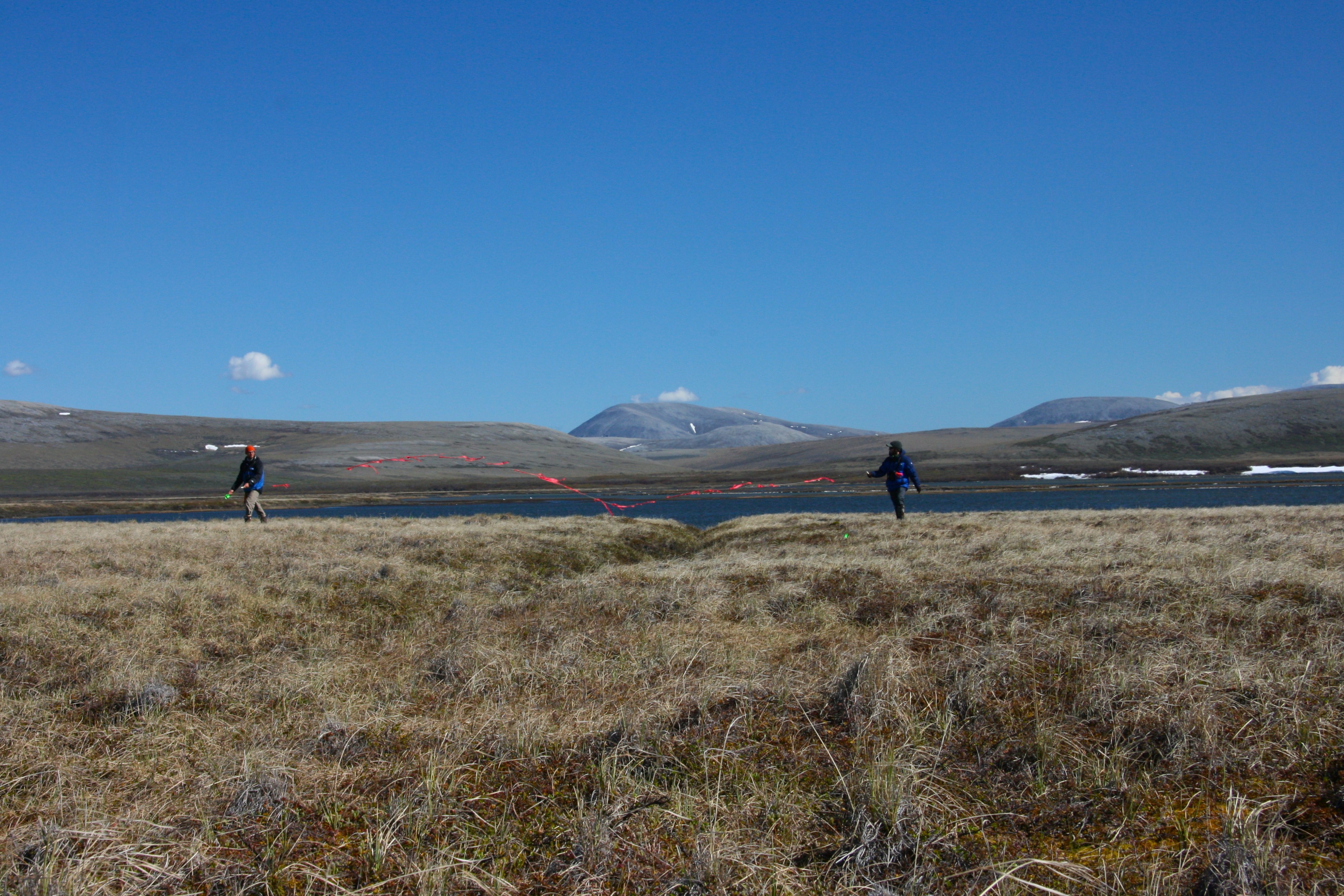
Researchers studying shorebirds near Krusenstern Lagoon team up to “rope drag”. This is a technique we use a couple of times during the season. To make sure we cover every bit of our study plot during, a rope is stretched between two searchers, who try to walk in a straight-line grid through the plot. Plastic flagging dangling from the rope contacts the substrate between them. The sound and movement causes ground-nesting birds to flush. Photo: Megan Boldenow.

A nest searcher on the shorebird crew at Cape Krusenstern National Monument carefully watches a shorebird from a distance. With the aid of binoculars, he hopes to observe the bird returning to its nest to incubate its eggs. Photo: Jared Hughey. All right reserved.
Adding a layer of complexity during early season nest searches, shorebirds are less invested in their nests while they are still laying eggs, and sometimes during early incubation when their “clutch” (the term we use for the set of eggs laid in a nest) is complete. Often shorebirds at this stage “flush” (i.e. creep, run, or fly) from their nest when searchers are too far away to notice them flushing; or, if noticed, pinpoint the location from which they flushed. Every species behaves a little bit differently when flushed from a nest, or when going back to the nest to incubate their eggs; and every individual shorebird may have slightly different tolerances for the presence of humans in their territory. Through hours and hours of daily observation, nest searchers learn to tune in to the behavioral cues that give away nest locations.
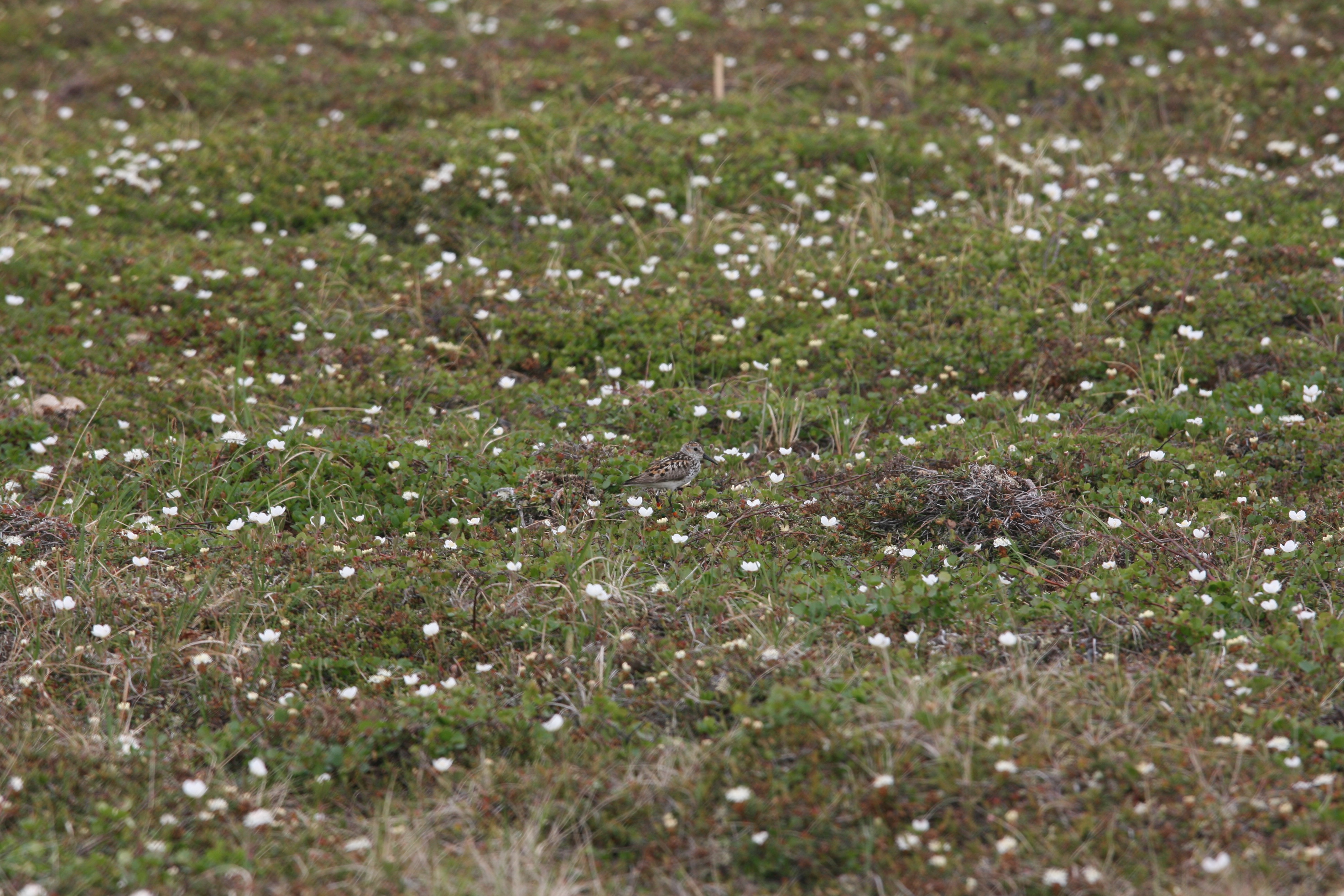
This Western Sandpiper’s behavior has convinced a researcher that it has a nest nearby. However tracking the bird back to its nest in the sea of birch, cloudberry, and sedges is challenging. Photo: Megan Boldenow.
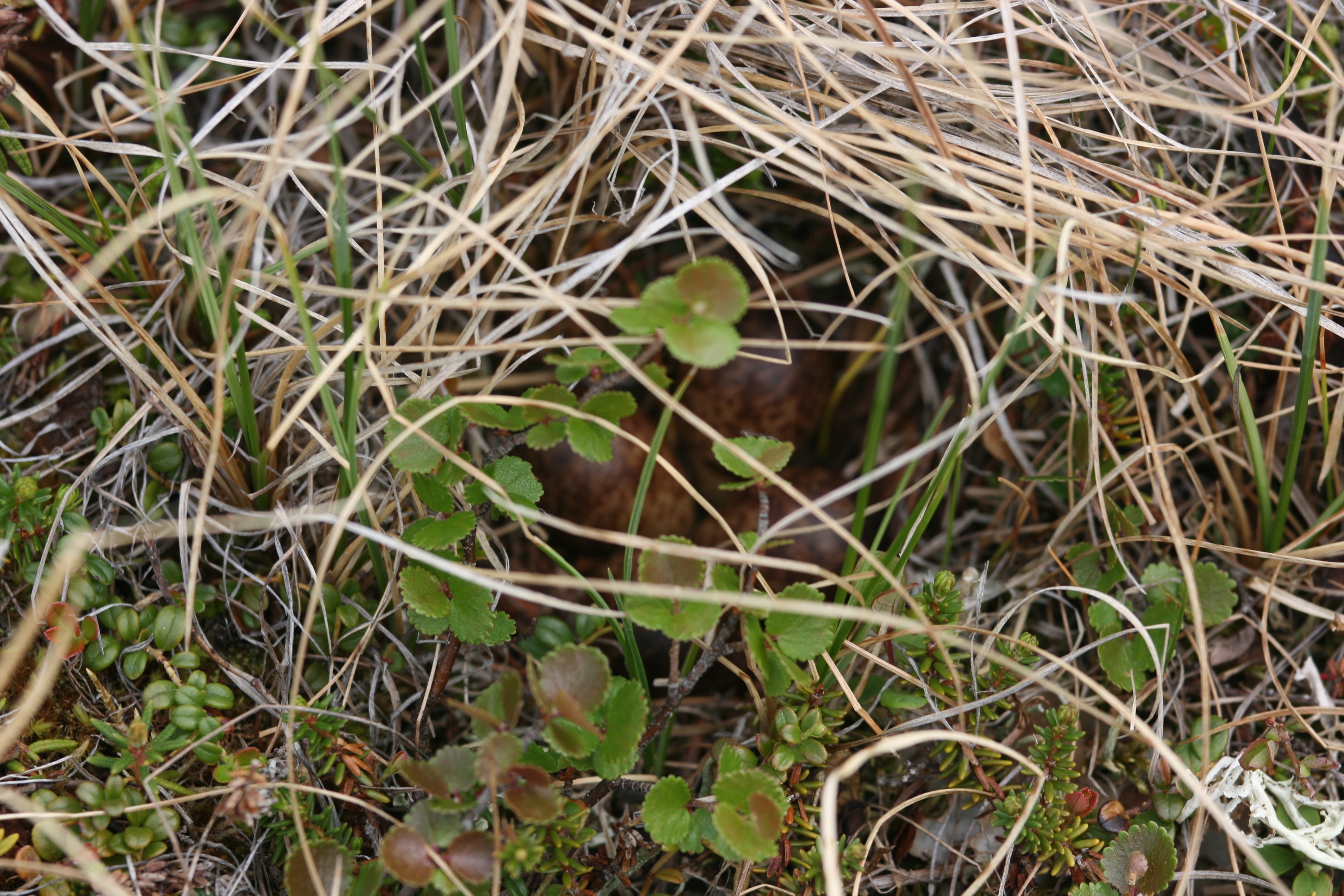
This Western Sandpiper nest illustrates how difficult it can be to locate shorebird nests on the tundra. The nest is just a shallow depression on the ground. It is hidden in sedges, and its entrance is covered by branches from birch and blueberry shrubs. A nest searcher would be unlikely to see this nest without observing the adult leaving or returning. Photo: Megan Boldenow.
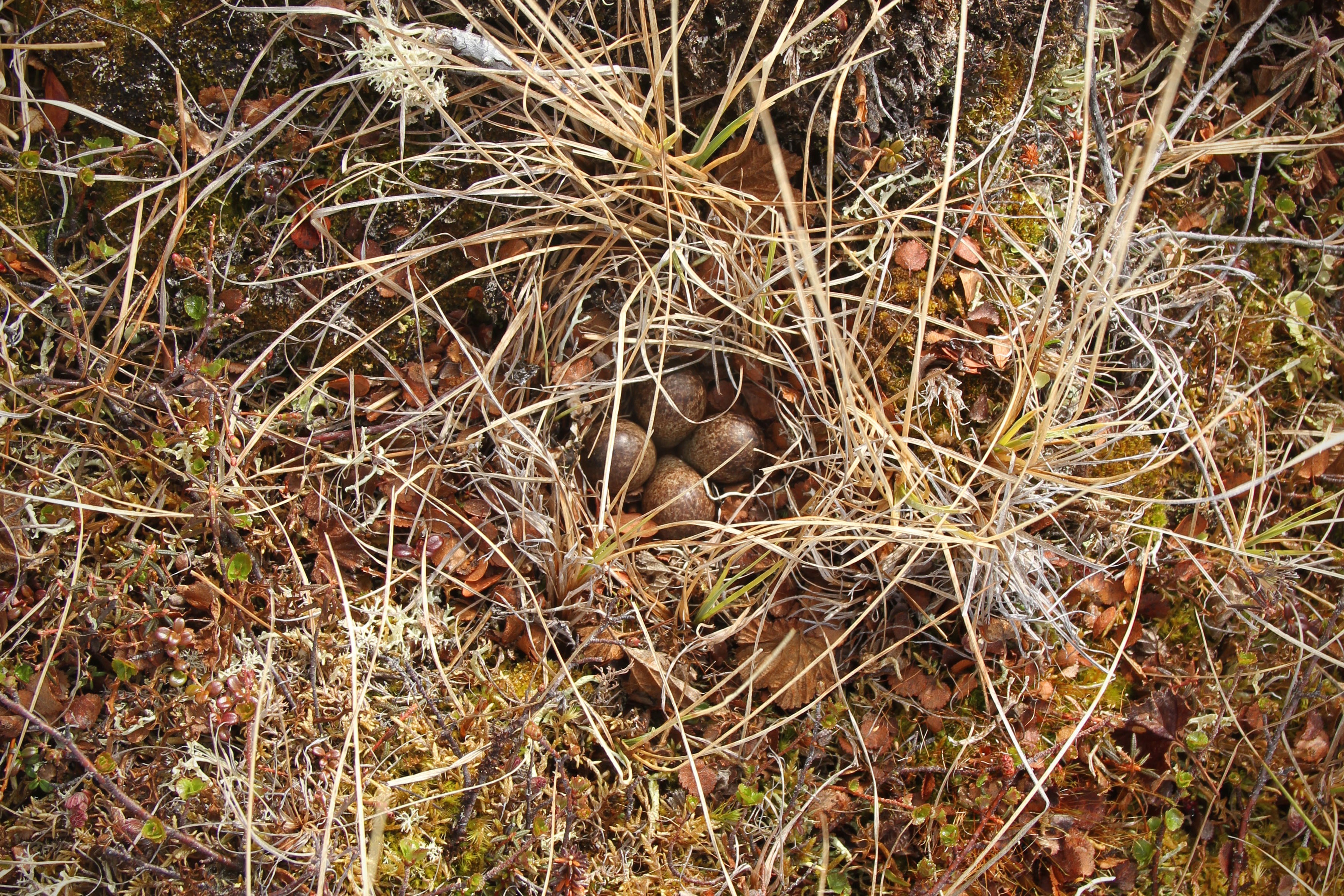
Even nests that are not as well hidden by vegetation can be tricky to spot. The four small eggs in this Western Sandpiper nest are cryptic (i.e. camouflaged). Their brown coloring and speckles blend in well with last year’s dried-up leaves. Photo: Jared Hughey. All rights reserved.
In essence, the nest searching component of our job is like being paid to go on an all-day scavenger hunt! Once searchers get the hang of things, the magic of finding those first nests won’t be replicated again until a couple of weeks later, when routine nest checks reveal the first chicks.
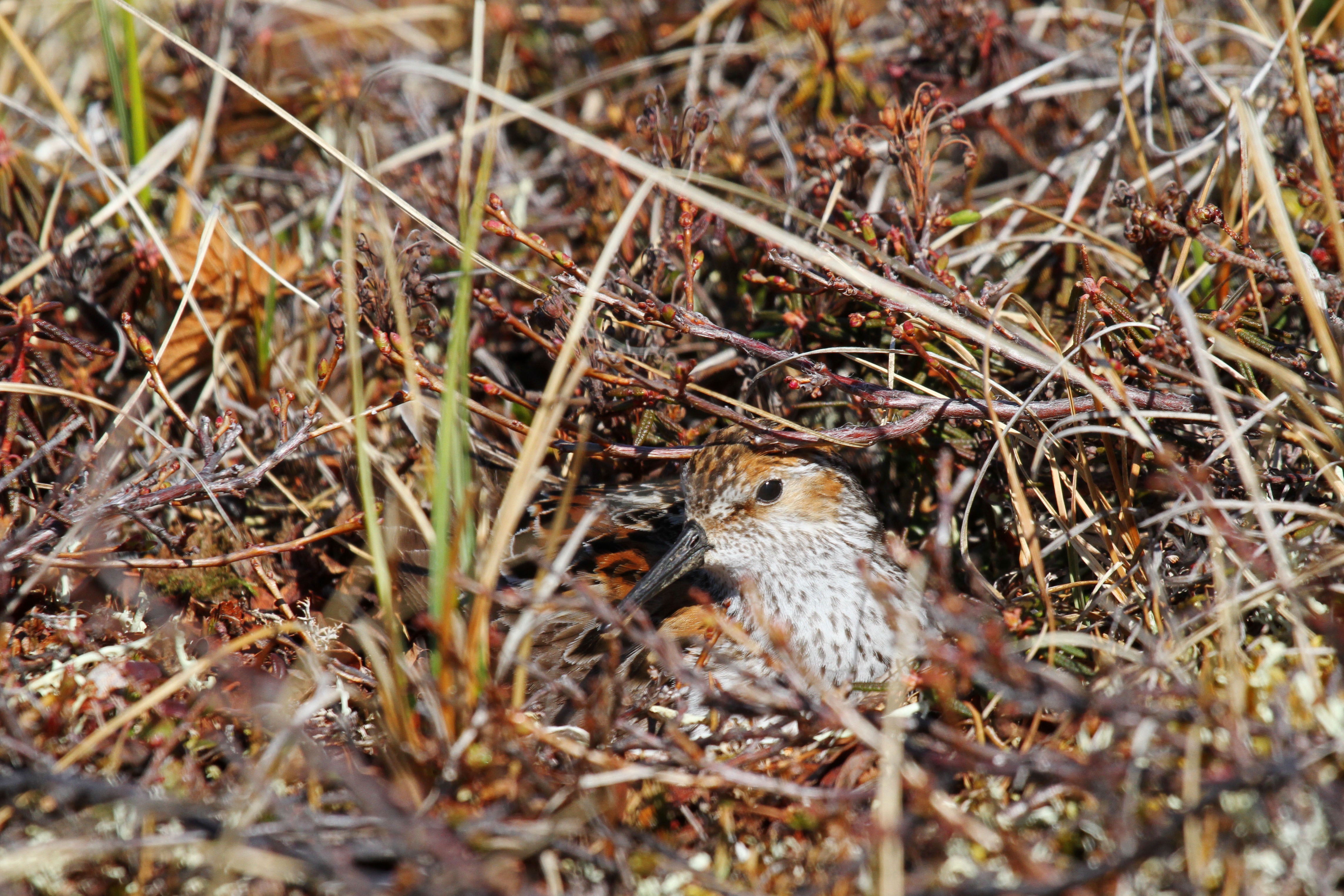
This Western Sandpiper sits tight on its nest. The rust-colored feathers on its head and back help it blend in with the tundra vegetation. Only its breeding plumage is colored like this. Its winter feathers will be a much duller grey, brown, and white. Photo: Jared Hughey. All rights reserved.
Did you enjoy this post? Please share a comment or question for our guest author below. Thank you!
